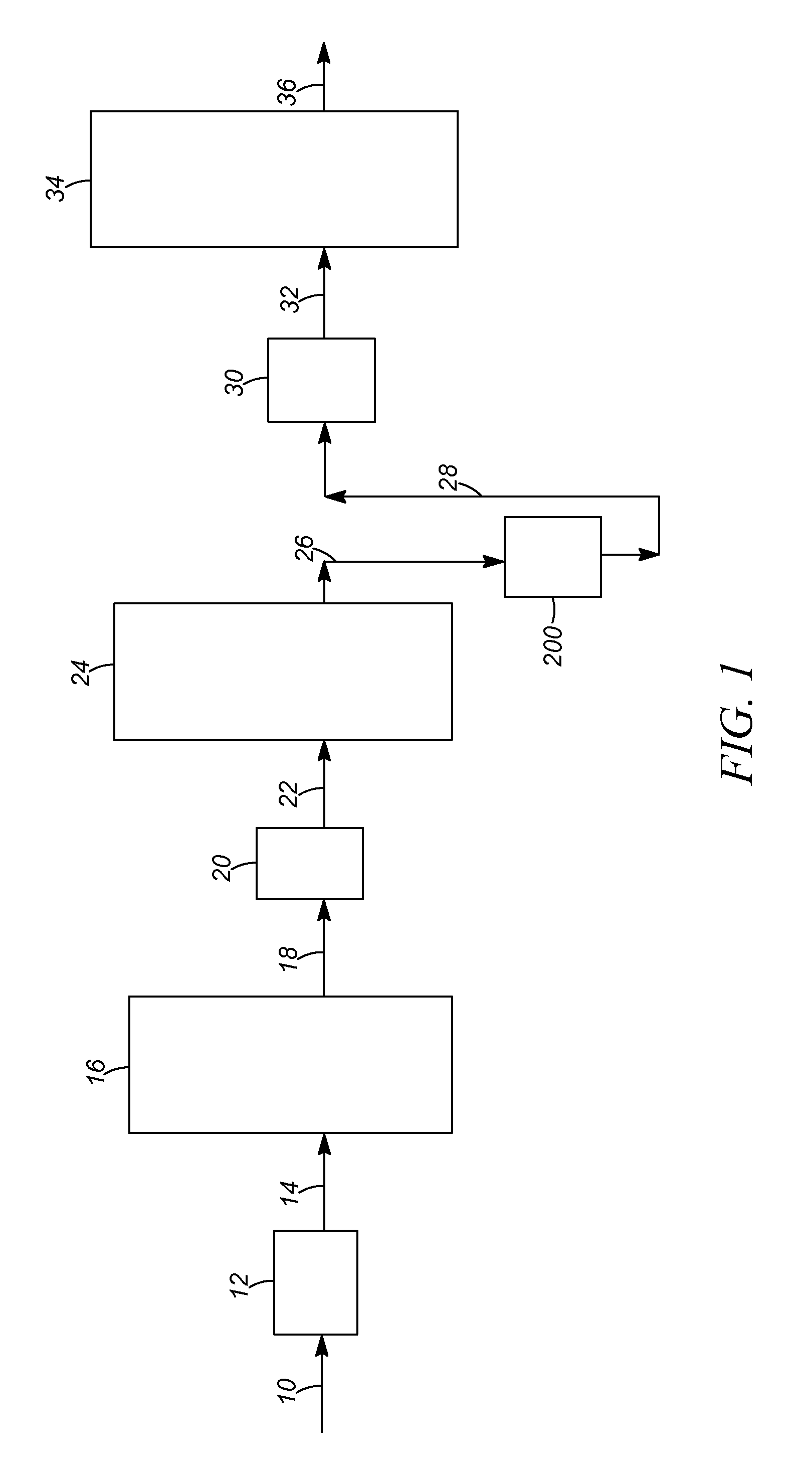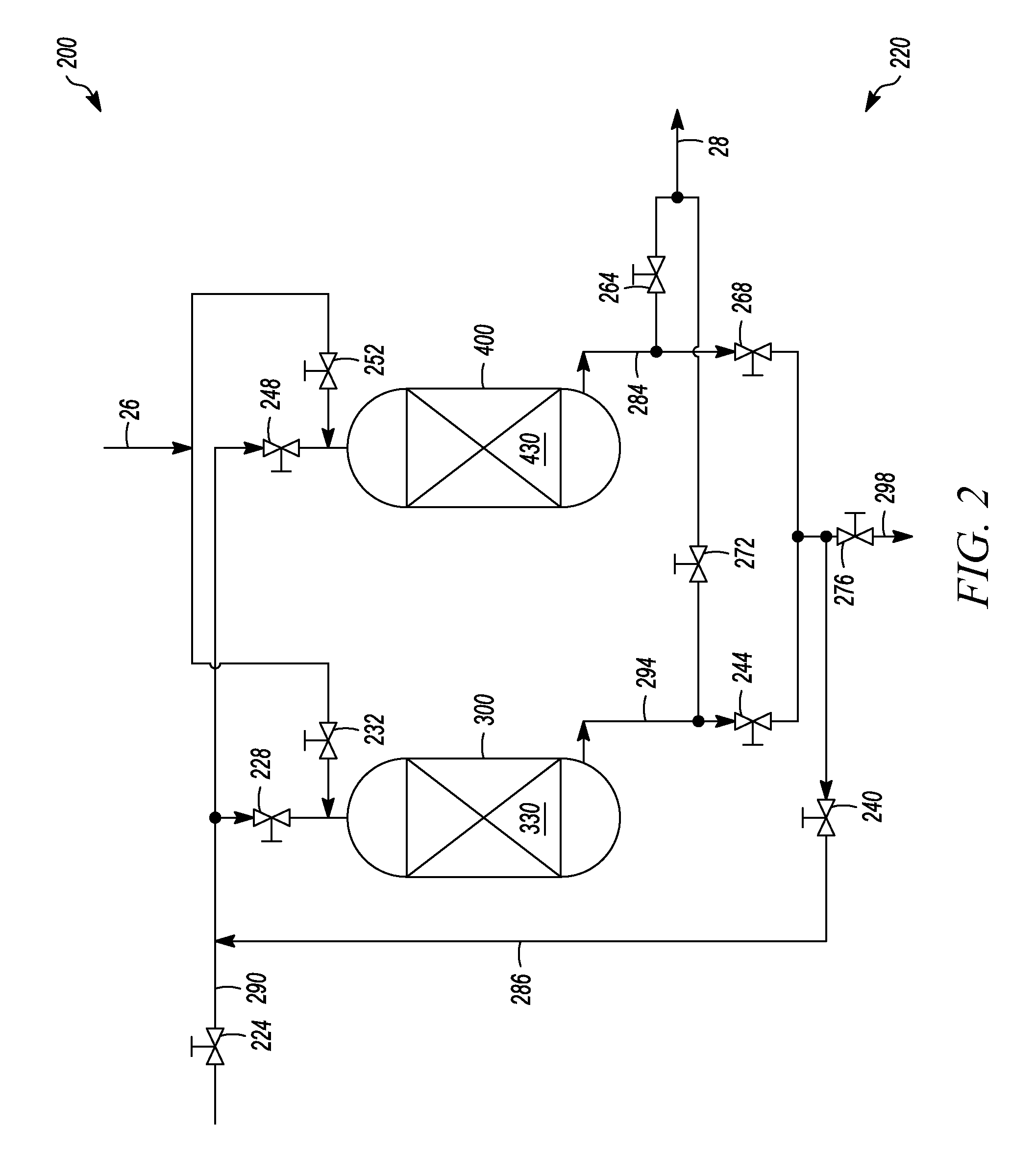Adsorbing polynuclear aromatics from a reforming process at reaction temperatures
a technology of polynuclear aromatics and reaction temperatures, which is applied in the direction of naphtha treatment, hydrocarbon distillation control/regulation, organic chemistry, etc., can solve the problems that none of the references have provided a highly economical and efficient process for removing pnas from one or more, and achieve the effect of reducing the concentration of polynuclear aromatics
- Summary
- Abstract
- Description
- Claims
- Application Information
AI Technical Summary
Benefits of technology
Problems solved by technology
Method used
Image
Examples
examples
[0040]The following examples are intended to further illustrate the subject embodiment(s). These illustrations are not meant to limit the claims to the particular details of these examples.
[0041]The following experiment utilizes two different carbon adsorbents to remove PNAs from a reformate. Subsequently, the reformate is analyzed to determine whether any PNAs remain in the reformate. The following experiments were conducted in an autoclave at 400° C. (752° F.) and 2068 kPa g (300 psig) using two different types of 12×40 mesh bituminous carbon adsorbents, see TABLE 1. The utilized adsorbents are bituminous carbons sold under the trade designation CAL and CPG by Calgon Carbon Corporation, Pittsburgh, Pa.
[0042]
TABLE 1SurfacePorePoreCarbonAreaVolumeDiameterNiVFeAdsorbentType(m2 / g)(cm3 / g)(Å)(ppm)(ppm)(ppm)CalgonBituminous8630.602844884030CALCalgonAcid Washed8990.672616181040CPGBituminous
[0043]For better contact, the reformate feed and the carbon adsorbent were stirred at 250 RPM for 30...
PUM
| Property | Measurement | Unit |
|---|---|---|
| temperature | aaaaa | aaaaa |
| pressure | aaaaa | aaaaa |
| temperature | aaaaa | aaaaa |
Abstract
Description
Claims
Application Information
 Login to View More
Login to View More - R&D
- Intellectual Property
- Life Sciences
- Materials
- Tech Scout
- Unparalleled Data Quality
- Higher Quality Content
- 60% Fewer Hallucinations
Browse by: Latest US Patents, China's latest patents, Technical Efficacy Thesaurus, Application Domain, Technology Topic, Popular Technical Reports.
© 2025 PatSnap. All rights reserved.Legal|Privacy policy|Modern Slavery Act Transparency Statement|Sitemap|About US| Contact US: help@patsnap.com


